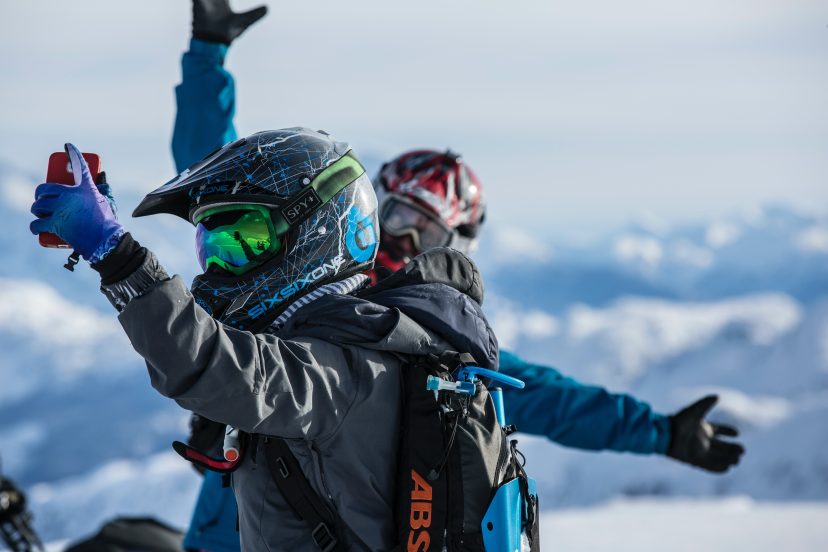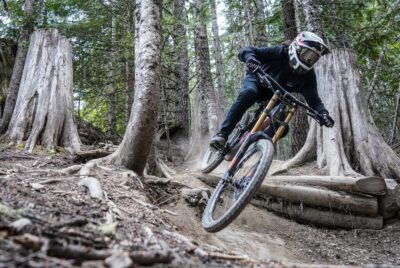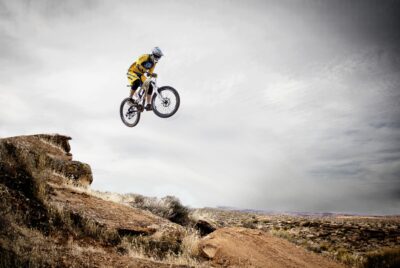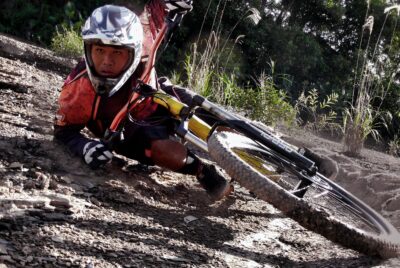Essential Gear for Mountain Biking
Introduction
As an avid mountain biker, I understand the importance of having the right gear for a safe and enjoyable ride. In this article, I’ll guide you through the essential gear you need to enhance your mountain biking experience. From protecting yourself to being prepared for any situation, these gear items are crucial for every rider.
Importance of Essential Gear
Before we dive into the specific gear items, let’s talk about why having essential gear is so important. Mountain biking involves tackling challenging terrains and encountering various obstacles. With the right gear, you can minimize the risks and maximize your comfort on the trails. So, let’s explore the must-have gear that every mountain biker should consider.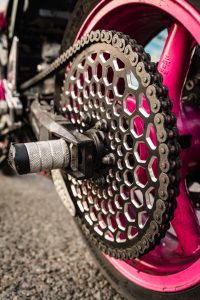
1. Helmet
Protect your head and ride with confidence.
A helmet is the most critical piece of gear for any mountain biker. It protects your head from potential injuries in case of falls or accidents. Look for a helmet specifically designed for mountain biking with features like adequate ventilation and impact protection. Choose a helmet that fits snugly and securely on your head to ensure maximum safety.
2. Protective Clothing
Ride comfortably and stay protected.
Wearing appropriate clothing while mountain biking is essential for comfort and safety. Invest in lightweight, breathable materials that allow freedom of movement. Consider padded shorts to cushion your ride and moisture-wicking jerseys to keep you cool. Additionally, gloves provide extra grip and protection for your hands during rides.
3. Shoes and Pedals
Maximize power transfer and control.
Invest in a good pair of mountain biking shoes that provide excellent support and traction. Look for shoes with a stiff sole for efficient power transfer to the pedals. Clipless pedals, which allow you to securely attach your shoes to the pedals, enhance control and pedalling efficiency. However, if you’re a beginner, flat pedals with good traction can provide a solid foundation as you develop your skills.
4. Eye Protection
Keep your vision clear and protected.
When riding on the trails, it’s crucial to protect your eyes from dirt, debris, and branches. Wear sunglasses or clear goggles to shield your eyes and improve visibility. These protective eyewear options also provide UV protection, ensuring your eyes are safe from harmful sun rays. Choose lenses that are suitable for different light conditions, allowing you to ride with clarity.
5. Tools and Repair Kit
Be prepared for on-trail repairs.
Carrying a basic toolkit and repair kit is essential for handling common issues that may arise during your ride. Your kit should include tire levers, spare inner tubes, a pump, and a multi-tool with various wrenches and screwdrivers. Familiarize yourself with how to use these tools and perform basic repairs, such as fixing a flat tire or adjusting your bike’s components.
6. Hydration and Nutrition
Stay fuelled and hydrated for optimal performance.
Proper hydration and nutrition are crucial for endurance and maintaining energy levels during your rides. Carry a hydration pack or water bottles to ensure you have enough fluids. Pack nutritious snacks like energy bars or fruits to fuel your body throughout the ride. Remember to drink water regularly and eat small, frequent meals or snacks to sustain your energy.
7. Bike Lights
Ride safely in low-light conditions.
If you plan to ride during dawn, dusk, or at night, having bike lights is essential for visibility and safety. Invest in a high-quality front light to illuminate the trail ahead and a rear light to make yourself visible to other riders and vehicles. Choose lights with different brightness settings and consider lights with a strobe or flashing mode to increase visibility.
8. Bike Lock
Protect your investment from theft.
When you’re out riding, it’s crucial to secure your bike properly when taking breaks or making stops. Invest in a sturdy bike lock to deter potential thieves and protect your bike from being stolen. Look for locks that are difficult to cut or break, and consider a portable lock that you can easily carry with you on your rides.
9. Bike Bag
Carry your essentials conveniently.
A bike bag or saddlebag is a handy accessory to carry small items like your phone, wallet, keys, and snacks. Look for a bag that attaches securely to your bike frame or saddle, providing easy access to your belongings during the ride. Make sure the bag is durable, water-resistant, and has enough storage space for your necessities.
10. GPS or Trail Map
Navigate the trails with confidence.
When exploring new trails or venturing into unfamiliar areas, having a GPS device or a trail map is invaluable. These tools help you navigate your route, track your progress, and ensure you don’t get lost. Choose a GPS device or a smartphone app that offers accurate trail maps and has features like offline mode to save battery life in areas with limited network coverage.
11. First Aid Kit
Be prepared for minor injuries.
Accidents happen, and it’s essential to be prepared for minor injuries on the trails. Carry a compact first aid kit that includes essentials like bandages, antiseptic wipes, adhesive tape, and pain relievers. Familiarize yourself with basic first aid procedures, so you can provide immediate care if needed.
12. Bike Pump
Keep your tires properly inflated.
Maintaining the correct tire pressure is crucial for a smooth and controlled ride. Invest in a portable bike pump that you can carry with you on your rides. Look for a pump that is compatible with your tire valves, lightweight, and easy to use. Regularly check and adjust your tire pressure according to the recommended levels for optimal performance.
13. Bike Rack
Transport your bike securely.
If you plan to ride in different locations or travel with your bike, a bike rack is a valuable accessory. Choose a bike rack that is compatible with your vehicle and can securely hold your bike in place during transportation. Look for features like adjustable straps or locking mechanisms to ensure your bike remains stable and protected during transit.
14. Bike Maintenance Tools
Keep your bike in top condition.
Regular bike maintenance is essential to prolong the lifespan of your bike and ensure optimal performance. Invest in a set of bike maintenance tools, including lubricants, degreasers, brushes, and cleaning supplies. Learn basic maintenance tasks such as cleaning your bike, lubricating the chain, and inspecting the brakes to keep your bike in top shape.
Conclusion
By investing in the essential gear mentioned in this article, you’ll enhance your mountain biking experience and ensure your safety on the trails. Remember, safety should always be a priority, so don’t compromise on protective gear. Ride with confidence, stay prepared, and enjoy the thrilling adventures that mountain biking has to offer.
FAQs
Q1. Can I use a regular bicycle helmet for mountain biking?
A regular bicycle helmet may not provide the same level of protection as a helmet specifically designed for mountain biking. Mountain biking helmets are designed to withstand higher impacts and offer better coverage for the back of the head. It’s recommended to invest in a helmet specifically made for mountain biking for maximum safety.
Q2. Do I need special shoes for mountain biking?
While you can ride with regular athletic shoes, investing in mountain biking shoes offers several advantages. Mountain biking shoes provide better grip, power transfer, and protection. They often have stiff soles, tread patterns for traction, and compatibility with clipless pedals or flat pedals with pins to enhance control and stability.
Q3. Is it necessary to carry a first aid kit on every ride?
Carrying a compact first aid kit is highly recommended, even for shorter rides. While minor injuries are common in mountain biking, having a first aid kit allows you to provide immediate care and prevent further complications. It’s better to be prepared for any situation that may arise during your ride.
Q4. What is the advantage of using clipless pedals?
Clipless pedals allow you to securely attach your shoes to the pedals using a cleat system. The main advantage of clipless pedals is improved power transfer and efficiency. They allow you to pedal more effectively by utilizing both the downstroke and upstroke motions. Clipless pedals also provide better control and stability, especially when navigating challenging terrain.
Q5. How often should I clean and maintain my mountain bike?
Regular bike maintenance is crucial to keep your mountain bike in optimal condition. Depending on your riding frequency and conditions, it’s recommended to clean your bike after every few rides or whenever it gets excessively dirty. Lubricate the chain regularly, inspect the brakes, and perform a thorough check-up at least once a month. Regular maintenance will extend the lifespan of your bike and ensure a smooth riding experience.

